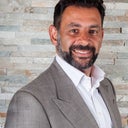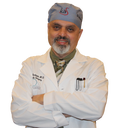Posted underFacelift q&a
Do most (highly skilled) surgeons use before and after photo simulations for facelifts?
How reliable are they, really? In other words, how often does the final outcome match the "after" simulation? Thank you.
Answers (26)
From board-certified doctors and trusted medical professionals
Dr. Alan B. Brackup, MD, FACS

Dr. Alan B. Brackup, MD, FACS
Oculoplastic Surgeon, Board Certified in Ophthalmology
Answer
Dr. Matthew Richardson, MD

Dr. Matthew Richardson, MD
Board Certified Facial Plastic Surgeon
Answer
Dr. Amir Nakhdjevani, MBBS, MRCS, FRCS(Plast)

Dr. Amir Nakhdjevani, MBBS, MRCS, FRCS(Plast)
Specialist Registered Plastic Surgeon
Answer
Dr. Sean Alemi, MD

Dr. Sean Alemi, MD
Board Certified Facial Plastic Surgeon
Answer
Dr. Philip S. Schoenfeld, MD, FACS

Dr. Philip S. Schoenfeld, MD, FACS
Board Certified Facial Plastic Surgeon
Answer
Dr. Andrew Campbell, MD

Dr. Andrew Campbell, MD
Board Certified Facial Plastic Surgeon
Answer
Dr. Richard G. Reish, MD, FACS

Dr. Richard G. Reish, MD, FACS
Board Certified Plastic Surgeon
Answer
Dr. Jeffrey Joseph, MD, FACS

Dr. Jeffrey Joseph, MD, FACS
Board Certified Facial Plastic Surgeon
Answer
Dr. Ronald J. Edelson, MD

Dr. Ronald J. Edelson, MD
Board Certified Plastic Surgeon
Answer
More Facelift Questions
See all Facelift Q&AWE SEND PRETTY
EMAILS
What’s trending? Who’s turning heads? Which TikTok myths need busting? We’ve got you. No fluff, no gatekeeping—just real talk. Get our free, unfiltered newsletter.
